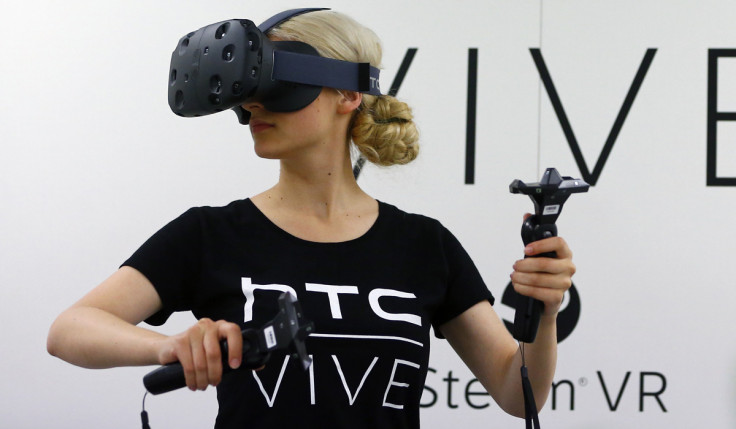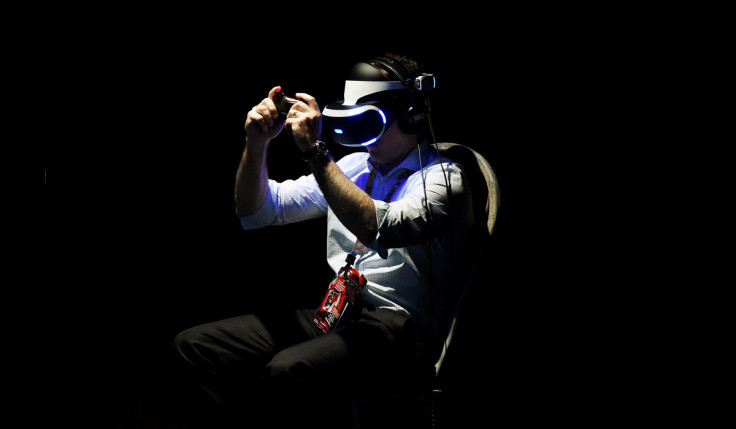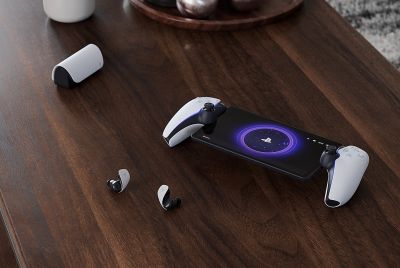HTC Vive, PlayStation VR and the problems with demonstrating virtual reality

This time next year, the virtual reality revolution will have begun. It may prove a resounding success, ushering in a new era for the tech industry. It may be a slow burner, with high prices keeping most people at bay. Or it may flop entirely following reports of widespread vomiting.
The latter is unlikely. Those who have tried out the HTC Vive, Oculus Rift, PlayStation VR or Samsung Gear VR are all convinced that the tech works, but there are a ton of questions, leaving an air of doubt over VR's potential success.
At EGX 2015, I tried out both the HTC Vive and PlayStation VR (PSVR) for the first time, and both were impressive. How each was demoed could not have been more different, though, and presents one of the big problems facing virtual reality.
Both set-ups in the cavernous National Exhibition Centre in Birmingham required an appointment, presumably to reduce the enormous queues each would have likely had. After letting the PlayStation desk know I was there and ready, they herded me and a couple of others into a roped off "pen" where we waited to be picked up by another rep and taken to our demo.
There were four games being demoed at four stations, but I was only offered the choice between two. Capcom horror The Kitchen and Rebellion's Battlezone – the modern incarnation of the classic Atari tank combat game. I opted for the latter and was impressed with the demo and tech. The headset was surprisingly light, everything ran smoothly and the game was fun – using a familiar experience to bring together experience of virtual reality and the conventional Dualshock controller.
It was a seated demo representative of how most players will be using the tech, but beyond thinking: "Yeah sure, that works," it didn't really make me want to slap down a couple of hundred sheets to get into VR as soon as humanly possible. I remained someone who would wait patiently for the killer app VR will surely need.

Later that same day, the HTC Vive nearly changed my mind instantly. In stark contrast to the brief, seated PSVR demo, I was hooked up to the Vive inside a small, 10ft by 10ft room with nothing in it but a computer terminal, the Vive, its two controllers and an exhausted HTC rep.
There were four demos of increasing interactivity for me to try out, and a menu which itself included a basic tutorial. The Vive comes with two handheld motion controllers that manifest in the virtual world as hands or as hands with controllers in them. In this menu area, I could select a colour from the controller's circular touchpad and click the pad in to select it, then watch a balloon of that colour inflate and float about.
The rep informed me that I could bat away the balloons too, so I started doing that. Just like that, the uncanny sense of having virtual hands became second(ish) nature.
The first demo placed me on the bow of a shipwreck underwater as fish and eventually an enormous whale swam by. Once again the interactivity of the demo didn't immediately dawn on me, so the rep gave me a nudge and said I could walk around the bow of the ship. The second demo was a VR recreation of those games in which players creates paths for aircraft to follow, aiding them in landing safely at a busy airport.
This was the longest demo and brought together all the factors of VR. I could walk through and around the virtual island on which the airport was, I could click on aircraft with my virtual hands and create an arcing path for it to follow, and most cutely of all, I found myself at one point on the ground scaring away seagulls on the runway.
Next game an art demo, which served only to show off my depressing lack of artistic inclination, but did give me an experience only possible in virtual reality. The art you can create is created in a 3D space and can be walked through. The tool in my left hand was also rendered as a 3D object that I could turn in my hand to see other options, all selected with a click from my right controller. It was a surreal and sadly brief demo.
Finally came the famous Portal demo, a product of HTC's partnership with Valve. Starring robots ATLAS and P-body from Portal 2 and series villainess GLaDOS, the demo brings together everything VR is about. I was engaged, I knew how to do what when asked, moved around freely and backed off when a character moved into my virtual personal space. I was there.
As a demo it was incredible, offering a glimpse of what might be possible and instilling the same sense of awe so many other reporters have felt. It's hard to imagine it will be the experience most consumers will have with it, though – few people have the sort of room required, and few will want to walk around virtual spaces in real spaces they can't see without a fair measure of trepidation.
Sony's PlayStation VR demo is closer to the reality of what using VR will mean for the average user, or gamer, but the Vive demo is undoubtedly better at getting people excited and showing off the impressive possibilities – even if most of those possibilities are better suited to specialist fields like engineering or medicine.
Most people won't be truly convinced by virtual reality until they've tested it out for themselves, and this will make demoing the tech publicly a big hurdle. Issues of cleanliness aside (the Wet Wipe industry must be chuffed), the dilemmas arise when deciding what games and types of experience to show off. It'll be crucial in how quickly, if at all, virtual reality takes off.
For all the latest video game news follow us on Twitter @IBTGamesUK.
© Copyright IBTimes 2025. All rights reserved.


















